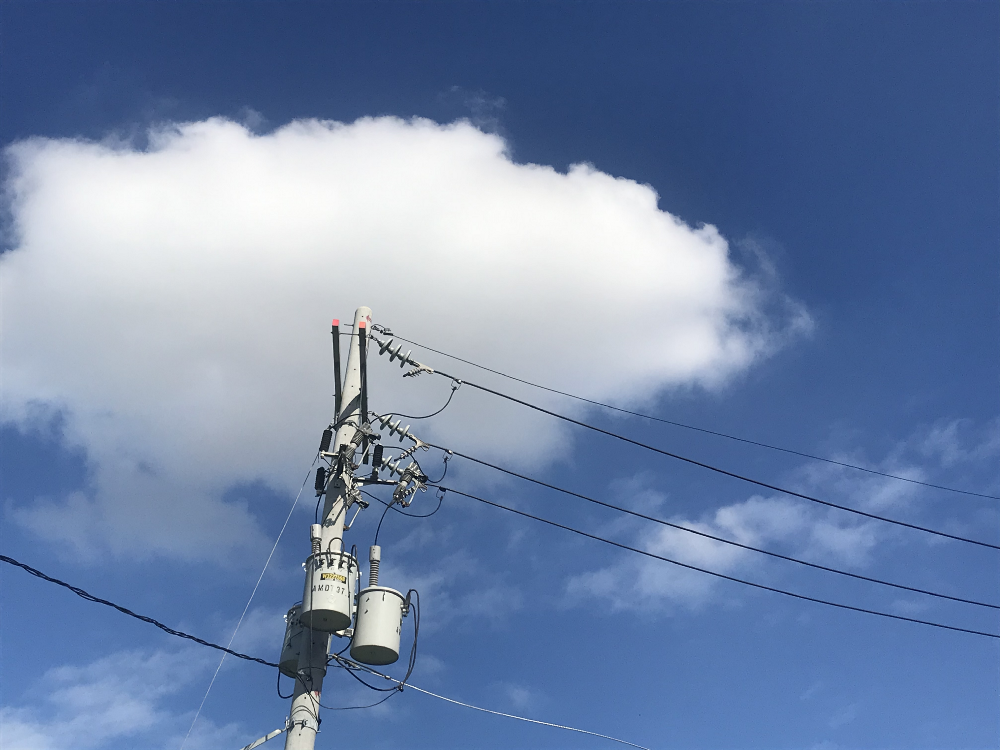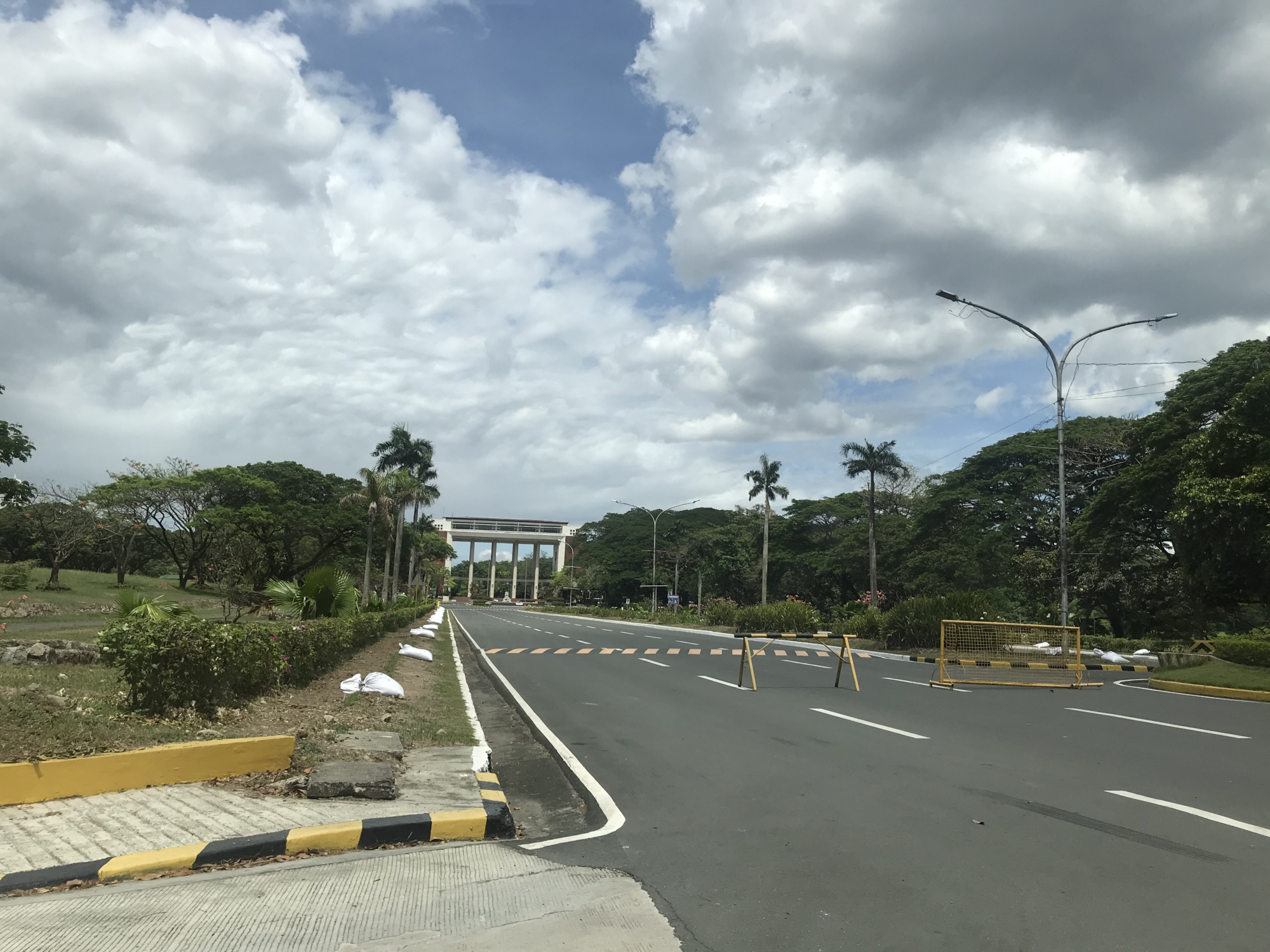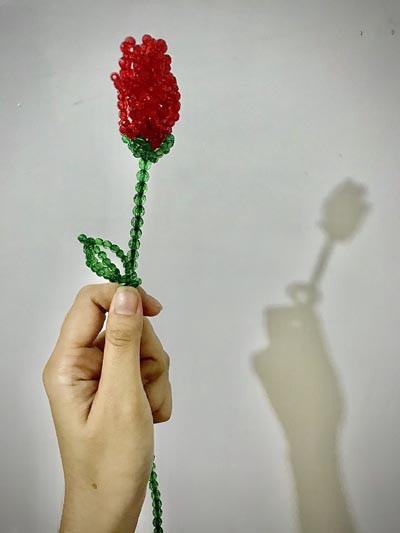The first time I heard of COVID-19 gaining ground in the Philippines was in late January. I was visiting Roxas City, Capiz to moderate a session on “Theater for a Cause” under Jejak Tabi, an exchange project between Southeast Asian and Japanese artists and academics.
It was the height of the fiesta and festival season in the island; flights were still freely coming in and out of the archipelago amidst news of airports closing elsewhere. Dinner table talk and jokes gave way to an understated unease over the new virus arriving by way of air: its transmission apprehended not only in the medical sense but through the network made possible by the intersections of global mobility, tourism, labor, and industry.
I recall prescient gestures before we all went our own ways; a Japanese participant gave a box of face masks for volunteers responding to the eruption of Taal volcano in Batangas. A high school teacher shared a video made by her students, learning to speak up for themselves.

To say that 2020 started on a challenging note for me is understating the succession of events after. Classes continued as volcanic activity calmed down in February — a rush of events around National Arts Month, Fine Arts Week, and University of the Philippines Diliman Month, marking the 50th anniversary of the First Quarter Storm, a period of civil unrest during the early 1970s in Manila. We just started visiting the Bakwit School of the lumad indigenous peoples inside campus. As attacks on the freedom of expression, the press, and the people’s movement grew, I took time to contribute to Black Friday actions in support of the ABS-CBN franchise renewal and participate in hearings during the last Congress sessions — ending up having to go on self-quarantine for weeks after. As the urgency of the pandemic dawned and the national order to “obey” the militarist lockdown was imposed, I parried my share of trolling, death threats, and insults as a citizen sharing her views on social media.
And yet the past two months since March seem busier than most days before the quarantine.
As university classes — online and offline — were suspended with each extension of the lockdown, most of my time as a cultural worker was channeled towards work for Concerned Artists of the Philippines (CAP). A number of us involved in the Dissident Vicinities (2017) curatorial project for Condition Report eventually volunteered for the organization since 2018.
Before the quarantine imposed by the government, we were one year into popularizing the call “Stop the Attacks” and were starting a campaign called #ArtistsFightBack, aiming for more Philippine artists and cultural workers to actively push back against threats to freedom, justice, democracy, and our collective welfare as people.
This resolve to create and critique grew under lockdown. Though difficult, we shifted strategies to continue the work and build social solidarity under conditions of physical distancing and political repression. These enabled us to advance the causes held dear by the collective: the defense of press freedom and freedom of expression, the advancement of artists’ rights and welfare, and solidarity with the people’s struggles.
It is important to not remain silent in the face of inaction, ineptitude, and injustice. If there is one thing that the pandemic made clear for the sector, it is that art and cultural work are vital to this. A pool of writers, artists, and editors contributed to producing our Fight COVID-19 public information and commentary since Day 1 of the lockdown, circulated on social media. These ranged from statements, essays, infographics, artworks and more in order to amplify the calls for systematic mass testing, relief and livelihood support for the people, personal protective equipment for frontliners, and truth in the face of disinformation. A pool of musicians went to work to boost morale. They produced new songs such as Babangon Tayo (We Will Rise Up) and Veerus Verses, an online jamming session called Lockdown Sessions, and an concert for frontliners on Workers Memorial Day last April 28, Ambagan: Artists in Solidarity.
The conditions of immobility and precarity among vulnerable groups and artists grew worse under the ECQ. From here, we helped with the CreativeAidPH survey of freelance cultural workers displaced and circulated a petition for artists’ relief to the government, which recently released aid programs. Another team quietly started a support group for the lumad youth who remain at the UP College of Fine Arts. For the first weeks, it facilitated requests for cooking and gardening equipment and raised cash donations for food and medicine. Since March 31, we sustained the Artists for Lumad Bakwit School fundraising initiative which invites filmmakers to share their works and call for donations by screening free-access films for a limited time.
As the pandemic runs its course, we respond to the educational and reflective turn through our Paki/Alam (concern; to know; to intervene) webinar series on freedom of expression and Reflections on Relief, a call for writings from Philippine creatives in response to the idea, experience, and practice of relief during the time of COVID-19. An online fundraising exhibit of lockdown art is also in the works. I also found myself co-moderating several Facebook groups birthed by the experience of quarantine, including Lockdown Diaries, Tugon, and Latag.

A friend likes to describe our work as heavy lifting, but the load is made infinitely lighter because of people who care and carry on with you despite insane pressure from all fronts and from different parties not to. I would like to particularly acknowledge our younger colleagues — including students — who continue to inspire and who I learn from in many ways. For them and these moments, I am grateful, because then this never feels like having to hold up half the sky.
With the severity and protractedness of the global and national situation, we have more a lot to do in terms of organizing, education, and support for ourselves and others; this thought weighs in any existing cognizance I have of the crisis and the many passings within.
As a writer, the present interface of practice poses a challenge. For much of the texts that beg for attention are not longer tracts that can be done at leisure (for there is none). Much of it is comprised of correspondences formal to informal, definitely practical. The dispatches needed now, at least to me, are often short, expedient, and urgent.
Any curatorial impulse and brainspace is channeled towards the attendant challenges of co-piloting an artists’ organization at this time and the quieter, though equally daunting, task of pursuing art history when the present itself is falling apart. How does one pursue learning and immersion, the conscious propagation of empathy and rooting of resolve to do more, in conditions of physical distancing? How does one organize mobilization on the ground when one’s presence may pose a risk to others?
This should not be seen as a merely theoretical problem. I recall Roxas City in January, where we were talking about the geography and genealogy of theater and activism at a time when community cultural workers, such as Alvin Fortaliza of Bansiwag-Bohol, are jailed. After the ECQ, Fortaliza’s colleague Marlon Maldos was killed in Bohol on March 17 after similarly being threatened. This is happening now, across the country, to many other people.

#FreePoliticalPrisonersPH call to free vulnerable prisoners in crowded jails
We are in a war, and it is not suprising that its metaphors are often mobilized in the discourse of COVID-19 pandemic response; every day it feels like preparing for one even in the space of home. My domestic regimen and routine — revolving around simple tasks of staying alive and keeping the space sanitized and sane — is coordinated across two households. A “normal” day in this abnormal crisis shifts between chores, tasks, making, a stream of meetings, #WorkFromHome assignments, contributing to online actions as part of #ProtestFromHome, depending on the political situation. During my sanity breaks, I learned to watch and listen to birds, attend to my modest collection of plants, and look up to the sky a lot (because that’s the best view from a window under lockdown).
Living in a campus housing complex, I am keenly aware that this situation is very different for the vast majority outside the university. If there is another tragedy that the pandemic has revealed in all clarity, it is the wide social gap that the existing system of inequality has reinforced across all national borders. It is this which threatens most the lives of our indigenous peoples, displaced in Manila even as militarization continues from the Cordillera to Mindanao; the urban poor, who are demonized and discarded like refuse; the workers and the peasants, whose labor is indispensable to our daily lives.
Conversely, artists and cultural workers are among the first to call out and speak up against the widening of this gap, and to ask why this should be ever regarded as the “new normal” in the first place (is it not?). I suspend cynicism and say that this is a sector which also cares for others, and must be cared for, because it cradles the conscience of our generation.
Lastly, the lockdown affords some quiet time to reflect on the task of the art historian, who is invested in not only documenting the sense of what is contemporary and critical about our cultural responses to COVID-19 but also crafting the long durational view of how we responded, humanely and imaginatively, to this time of crisis.
As an art history teacher, I think it is a privilege to be alive and able during this time, and to be afforded the possibility of doing something about the distillation of lived experiences in ways and modes that may reach more people. It is humbling to be seeing histories of the present on this scale: to observe how counter-narratives of people’s cultural responses to the pandemic take flight, even as we are intensely engaged in their crafting on the ground.


